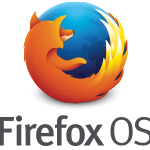Mobile computing devices have become commonplace in our society with an incredible amount of innovation occurring in the last decade alone. These developments have had a wide ranging impact on our daily lives, leading to a culture that highly values being connected to the network at all times. Companies are developing and releasing more powerful computers that fit into smaller packages by the month.
Proprietary operating systems have dominated the mobile phone market for most of its existence. In the past, the standard practice has been for each phone manufacturer to build its own specific operating system to support its line of phones. This required an extensive amount of research and application development work, requiring substantial investments of money and manpower.
The epitome of this business design is the iPhone from Apple. The original iPhone played an integral role in establishing the design  and functionality of modern smartphones and led to a plethora of manufacturers that have produced phones imitating the iPhone to various degrees. The iPhone 5S and 5C were recently released and have contributed to the continued success of Apple in the mobile phone market.
and functionality of modern smartphones and led to a plethora of manufacturers that have produced phones imitating the iPhone to various degrees. The iPhone 5S and 5C were recently released and have contributed to the continued success of Apple in the mobile phone market.
In 2008, the standard of proprietary operating systems in mobile phones were disrupted when the first Android mobile phone hit the market. Google has owned Android inc. since 2007. Android inc. is the primary developer of Android, an open source operating system based on Linux. By the end of 2010, Android overtook iOS as the most widely used mobile operating system; a position it holds to this day.
The market players
The success of Android has led a number of other companies to focus on developing their own open source operating systems. Four major open source mobile operating systems have entered the fray, each of them a custom distribution of Linux.
Android
The biggest force in this market is Google’s Android operating system, as it has been accepted by a wide range of hardware manufacturers. The core of Android is open source, but Google has created a series of proprietary applications to augment it. A number of developers have flocked to Android because of its relative ease of installation on consumer products outside the mobile phone market.
Ubuntu Touch
Canonical’s inability to produce a profit seems to have little effect on the company’s ability to innovate. The end goal of the company’s recent foray into the mobile operating system market is to merge the computing experience across platforms, including desktop computing, TV and entertainment, tablets and mobile phones. Its end goal is to create an operating system that’s seamless across a multitude of platforms and the progress it has made in this area is quite significant.
Chrome/Chromium
Google released the Chrome browser in 2008 and has since spent significant effort expanding how people use Web browsers. The abilities of HTML have expanded significantly, increasing the capabilities of modern Web browsers. Google capitalized on these improvements by building an operating system that’s little more than the Chrome browser built on top of Linux. This is a unique approach to the design of operating systems and has serious potential to drastically change how we use Web browsers.
Firefox OS
Mozilla’s approach to operating system design is similar to the work of Google in that both rely primarily on HTML and other open standards like CSS and JavaScript for functionality. At the core of the operating system is an API that allows HTML to communicate with phone hardware; this allows developers to package websites as HTML “Web apps” that can be run over the internet without the need to download the application to the phone.
Putting it all into context
These four projects highlight the growing influence of open source on the mobile industry. I plan to use this series to demonstrate the effects these open source projects are having on the traditional methods companies relied on to produce mobile products in the past. It appears this industry is headed towards a greater acceptance of open source designs and open standards; this trend is only going to continue to grow and those that capitalize on it now will be on the leading edge of the curve.
Image Credits: Wikimedia Commons, Google, Wikimedia Commons, Wikimedia Commons




